Production Year 2018
SPIRIT OF JAPAN Giving Hope to Breast Cancer Patients ~The Challenge of Japanese Craftsmen~
DC291835![]()
日本のチカラ 人工乳房で微笑みを ~常滑焼「型」職人の挑戦~ [NBN]
![]()
![]()
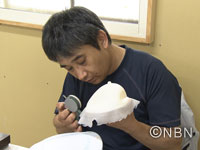
|Length : 26 |Year : 2018 |
Tokoname City is located in the center of the Chita Peninsula West Coast in Aichi Prefecture. It is also home to the Chubu Centrair International Airport – the entrance to Japan’s central region. Tokoname is known for its traditional ceramics industry and rows of shops selling pottery and earthenware.
The Maeda Mold introduced in this episode is made by a small business that has been creating plaster molds for ceramic ware for over half a century.
Cheap foreign-made ceramics and other earthenware have driven many of Tokoname’s potters out of business; however, Maeda Mold has been seeking new avenues of revenue to keep the business alive.
One of these new ventures is artificial breasts made of silicon.
Driving this successful business are the skills of the artisans who create the pottery molds used by Maeda Mold. The company has taken the bold step of applying these techniques to create artificial breasts.
These artisans had a strong desire to utilize the traditional techniques of their craft to make breast cancer patients smile by creating artificial breasts. They hoped these women can enjoy soaking in a hot spring with their friends or taking a bath with their young children, which are common in Japan, and doing other everyday things that women with natural breasts can easily do. After a series of trial and error, the artisans have successfully created a completely natural looking breast.
Maeda Mold’s artificial breast business has developed into a key revenue source that currently accounts for about a quarter of all of its sales. This story illustrates the dedicated efforts of these Tokoname ware artisans, who have found a way to use the techniques that have supported the traditional ceramics industry to bring joy to breast cancer patients.
Tech Innovators in Japan~①Making Papers from Waste Materials ②Packing Revolution Using Unique Scales~
DC291836![]()
世界一の九州が始まる! ① 棄てられるものの輝き ②小分け革命!~はかり知れない計量器~ [RKK]
![]()
![]()
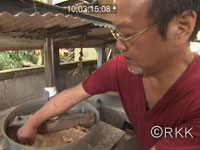
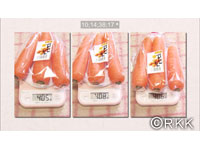
|Length : 24 |Year : 2018 |
① The "Haguregumo Workshop” in Minamata City, Kumamoto Prefecture, is a paper-making workshop started by Junpei Kanazashi thirty years ago. They use traditional materials like mulberry bark as well as banana leaves, onion skin, even worn-out jeans to make paper. Junpei’s wife Hiroko raises her own cotton and flowers to make colored cloth. According to Junpei, Japan is unique in how its art was developed through things to use in one’s life, as opposed to things to view and appreciate like in Europe. Japan was once a society of recycling, living in harmony with nature. Junpei seeks to keep that wisdom alive through his work, and to show it to the world.
② A new measuring scale is revolutionizing Japan’s vegetable sorting industry. The “Table Combi” developed by OK Planning (based in Kumamoto City) is a measuring device that notifies workers of an appropriate produce combination the moment its scales have found one. Company president Mitsuru Hatae departed his desk job in his forties and started a company with the goal of making produce packaging as easy on the workers as he could. To make measuring scales makers of produce really need, he spends his days bouncing back and forth between his office and farmer worksites. It’s been three years since they started development, and now this venture business of five employees is aiming for national and international business with their unique strategies.
 Viewpoint Science | Look Underneath
Viewpoint Science | Look Underneath
ED301806![]()
下から見てみる [NHK]
![]()
![]()
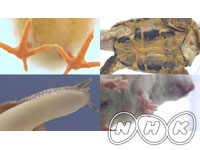
|Length : 10 |Year : 2018 |
If we look at various creatures from underneath, maybe we'll find something fascinating. How do such creatures as snails and sea snails move?
 Viewpoint Science | Describe It in Words
Viewpoint Science | Describe It in Words
ED301807![]()
コトバにしてみる [NHK]
![]()
![]()

|Length : 10 |Year : 2018 |
Let’s describe something familiar. It’s white and oval-shaped. One end is a little bit pointed. What is it?
 Viewpoint Science | Try to Sort Them
Viewpoint Science | Try to Sort Them
ED301808![]()
仲間分けしてみる [NHK]
![]()
![]()
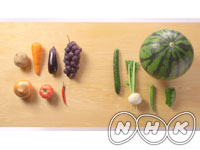
|Length : 10 |Year : 2018 |
Carrots, grapes, okra, eggplant, watermelon, radishes, cucumbers… Various fruits and vegetables. What interesting stuff will you find when you try to sort them into groups?














